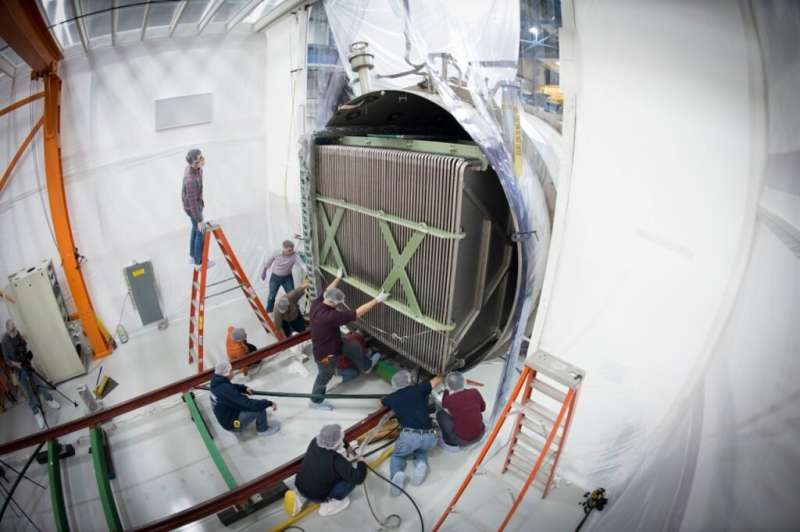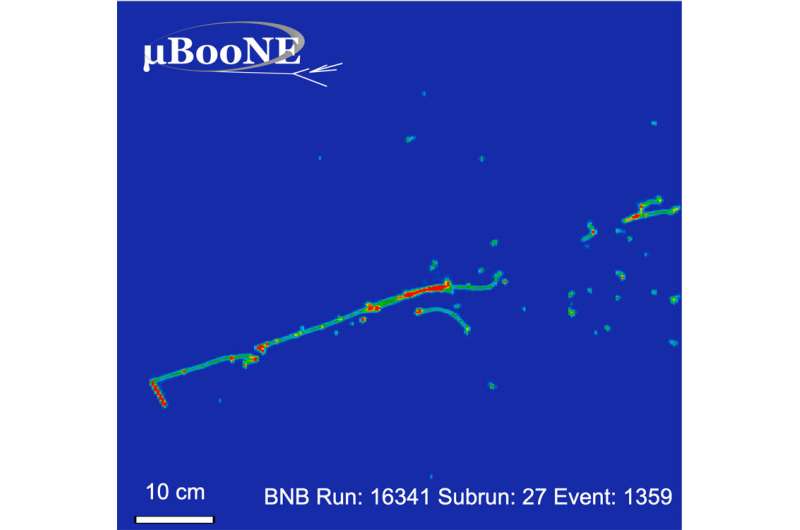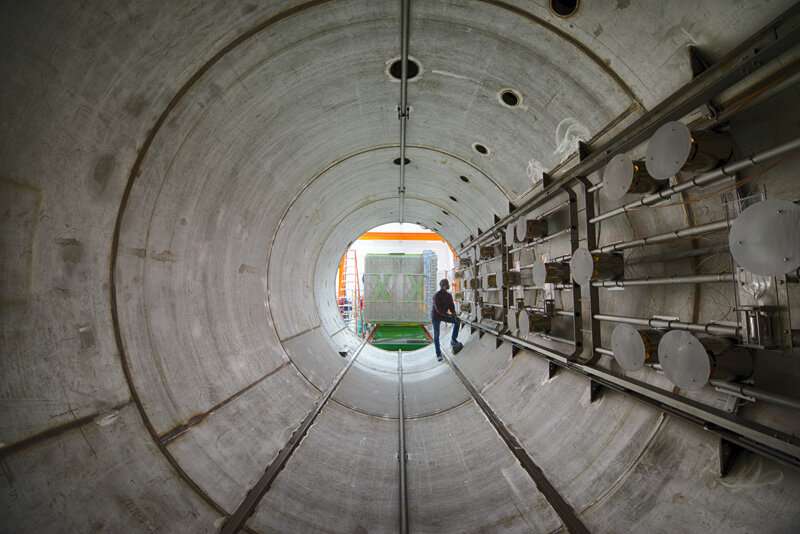
New results from the MicroBooNE experiment at the U.S. Department of Energy's Fermi National Accelerator Laboratory deal a blow to a theoretical particle known as the sterile neutrino. There is no such thing.
For more than two decades, this theory of a fourth neutrino has remained a promising explanation for anomalies seen in earlier physics experiments. Finding a new particle would be a major discovery and a radical shift in our understanding of the universe. And also a likely Nobel Prize. But it's not to be.
Among the scientists who are part of the international, multi-university multi-agency MicroBooNE effort is Camillo Mariani, a professor in the Department of Physics, part of the Virginia Tech College of Science. He worked on the project from its start, beginning in 2012.
"The most recent results are very important for the neutrino community, for two main aspects. It is the first big physics results coming out of a liquid argon time projection chamber (TPC). Liquid argon TPC has always been very promising in terms of technology but never produced big physics results. The second is of course that we now understand nature better," said Mariani, who also is a member of the Center for Neutrino Physics at Virginia Tech and director of Kimballton Underground Research Facility in Giles County.

The results, announced today, align with the Standard Model of Particle Physics, scientists' best theory of how the universe works. The data is consistent with what the Standard Model predicts: three kinds of neutrino—no more, no less. Neutrinos come in three known types—the electron, muon and tau neutrino—and can switch between these flavors in a particular way as they travel.
"For many years we investigated the possibility of existence of a fourth neutrino, a new particle, not predicted in the standard model of particle physics," Mariani added. "The MiniBooNE experiment in early 2010 showed an anomaly, one could possibly explain with the existence of a sterile neutrino. I was part of this collaboration and author of one of the most recent papers from MiniBooNE. With the advance in technology and detailed offered by liquid argon projection chamber, MicroBooNE was able to disfavor the interpretation of the MiniBooNE low energy excess as due to sterile neutrino. It is a bit sad seeing the possibility of discovering another particle, but we advance our knowledge of nature and that is a very important thing."
MicroBooNE is a 170-ton neutrino detector roughly the size of a school bus has operated by Fermi National Accelerator Laboratory near Chicago since 2015. The international experiment has close to 200 collaborators from 36 institutions in five countries. They used the technology to record spectacularly precise 3D images of neutrino events and examine particle interactions in detail—a much-needed probe into the subatomic world, according to FermiLab.
The MicroBooNE detector uses special light sensors and more than 8,000 painstakingly attached wires to capture particle tracks. It's housed in a 40-foot-long cylindrical container filled with 170 tons of pure liquid argon. Neutrinos bump into the dense, transparent liquid, releasing additional particles that the electronics can record. The resulting pictures show detailed particle paths and, crucially, distinguish electrons from photons.

Beginning in 2012 with his arrival in Blacksburg, Mariani and several postdoctoral researchers participated in the construction, assembly, and commissioning of the MicroBooNE detector.
"We had responsibility for the online system that monitors the quality of the data coming out of the detector and we did some preliminary detector work with undergraduate students that built a mini-detector and drove it to Fermilab in 2014. The detector was used to identify muons cross sing the main detector volume," Mariani said.
Neutrinos are one of the fundamental particles in nature. They're neutral, incredibly tiny, and the most abundant particle with mass in our universe—though they rarely interact with other matter. They're also particularly intriguing to physicists, with a number of unanswered questions. These puzzles include why their masses are so vanishingly small and whether they are responsible for matter's dominance over antimatter in our universe. This makes neutrinos a unique window into exploring how the universe works at the smallest scales, Fermilab said in a news release.
With sterile neutrinos further disfavored as the explanation for anomalies spotted in neutrino data, scientists are investigating other possibilities, according to Fermilab. These include things as intriguing as light created by other processes during neutrino collisions or as exotic as the theorized dark matter.

Mark Pitt, department chair and a professor of physics, said many of his faculty from the Center for Neutrino Physics have been actively involved with the search for the sterile neutrino.
"Detection technologies to search for sterile neutrinos have been an active interest of center faculty members Jonathan Link and Bruce Vogelaar," Pitt said. "On the theoretical side, center director Patrick Huber and Camillo's group have been leading the way in understanding how liquid argon experiments like MicroBooNE are affected by the modeling of neutrinos interacting with the argon nucleus."
Pitt added that as far back as 2011, Mariani hosted the international workshop Sterile Neutrinos at the Crossroads as one of the center's first events.
Huber, the director of the center, added, "This is the first time we got a real sort of top-of-the-line physics observation from a liquid argon detector, it also shows this is a complicated technology. The analysis took a long time. They had stopped data taking quite a while ago, but just converting that raw data from the detector into a statement about physics is a really difficult process. … It's a good day for science, we learned something, we learned it's photons, not electrons."
What's next for Mariani? He's part of the new Deep Underground Neutrino Experiment (or DUNE for short), a flagship international experiment also hosted by Fermilab that already has more than 1,000 researchers from over 30 countries. DUNE will study oscillations by sending neutrinos 800 miles through the earth to detectors at the mile-deep Sanford Underground Research Facility. The combination of short- and long-distance neutrino experiments will give researchers insights into the workings of these fundamental particles. Now under construction, the detector is expected to go live in 2027.
Citation: Scientists find no hint of sterile neutrino (2021, October 27) retrieved 28 October 2021 from https://ift.tt/2XQharX
This document is subject to copyright. Apart from any fair dealing for the purpose of private study or research, no part may be reproduced without the written permission. The content is provided for information purposes only.
https://ift.tt/3Et9ADl
Science
No comments:
Post a Comment